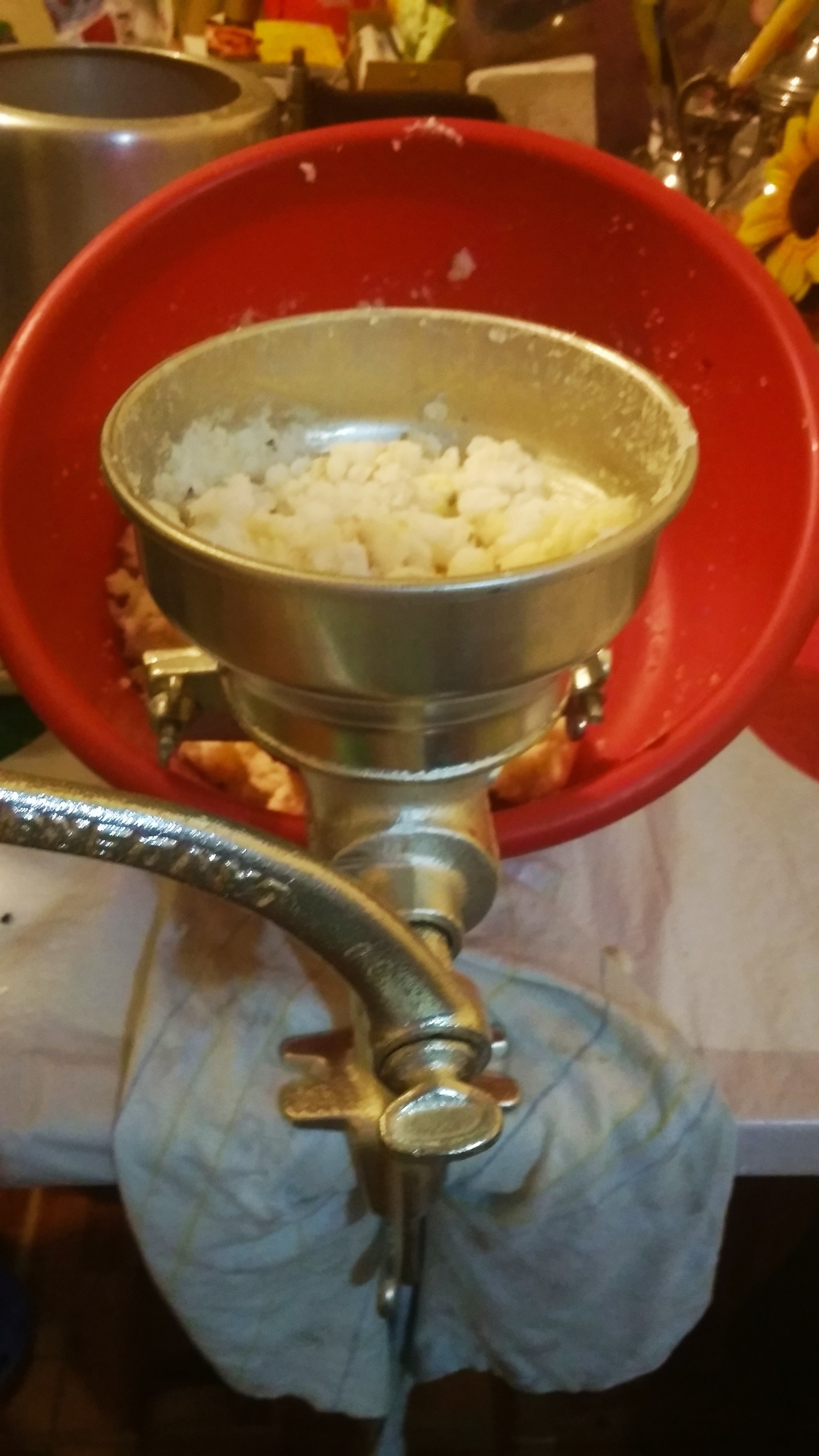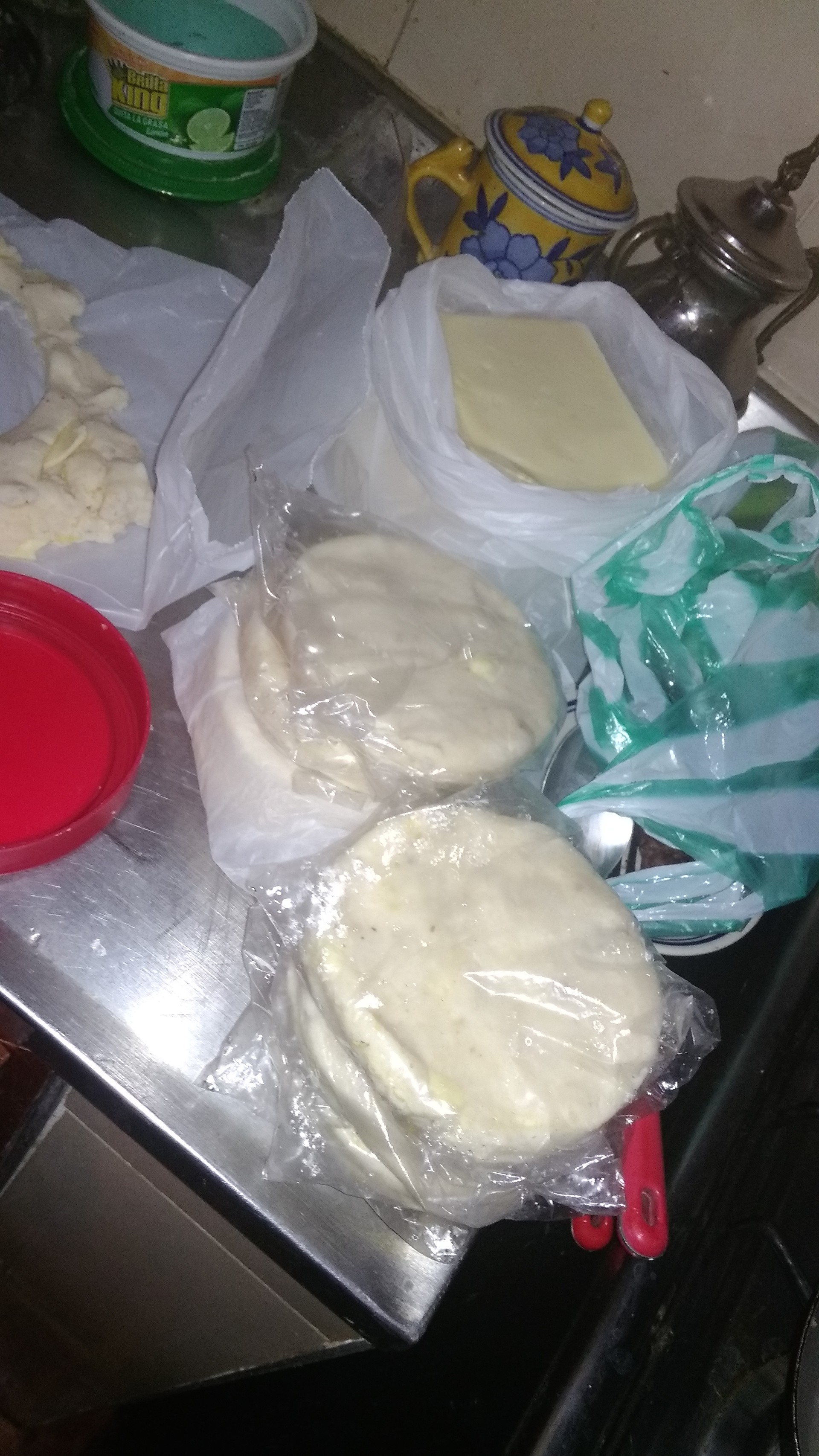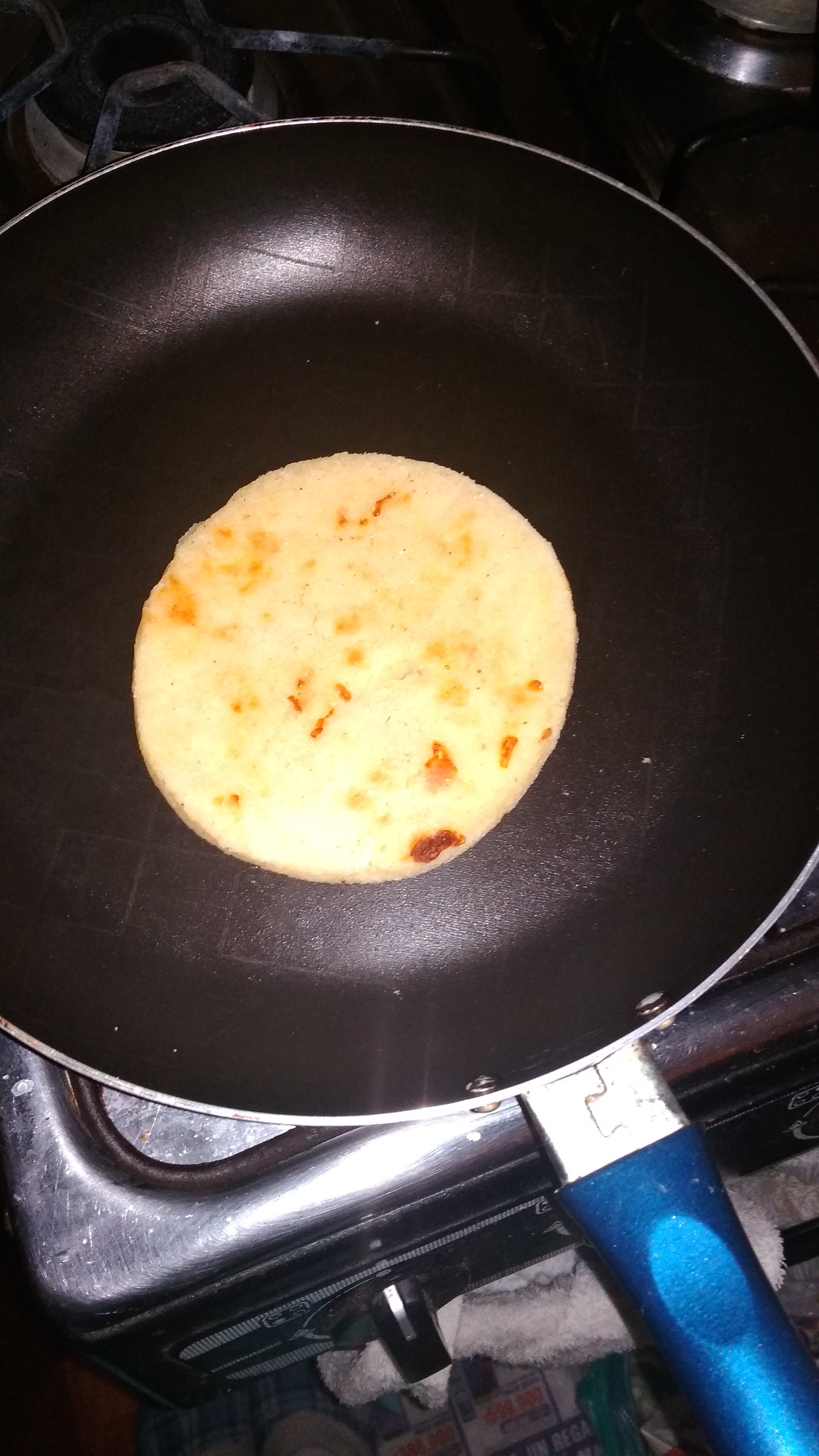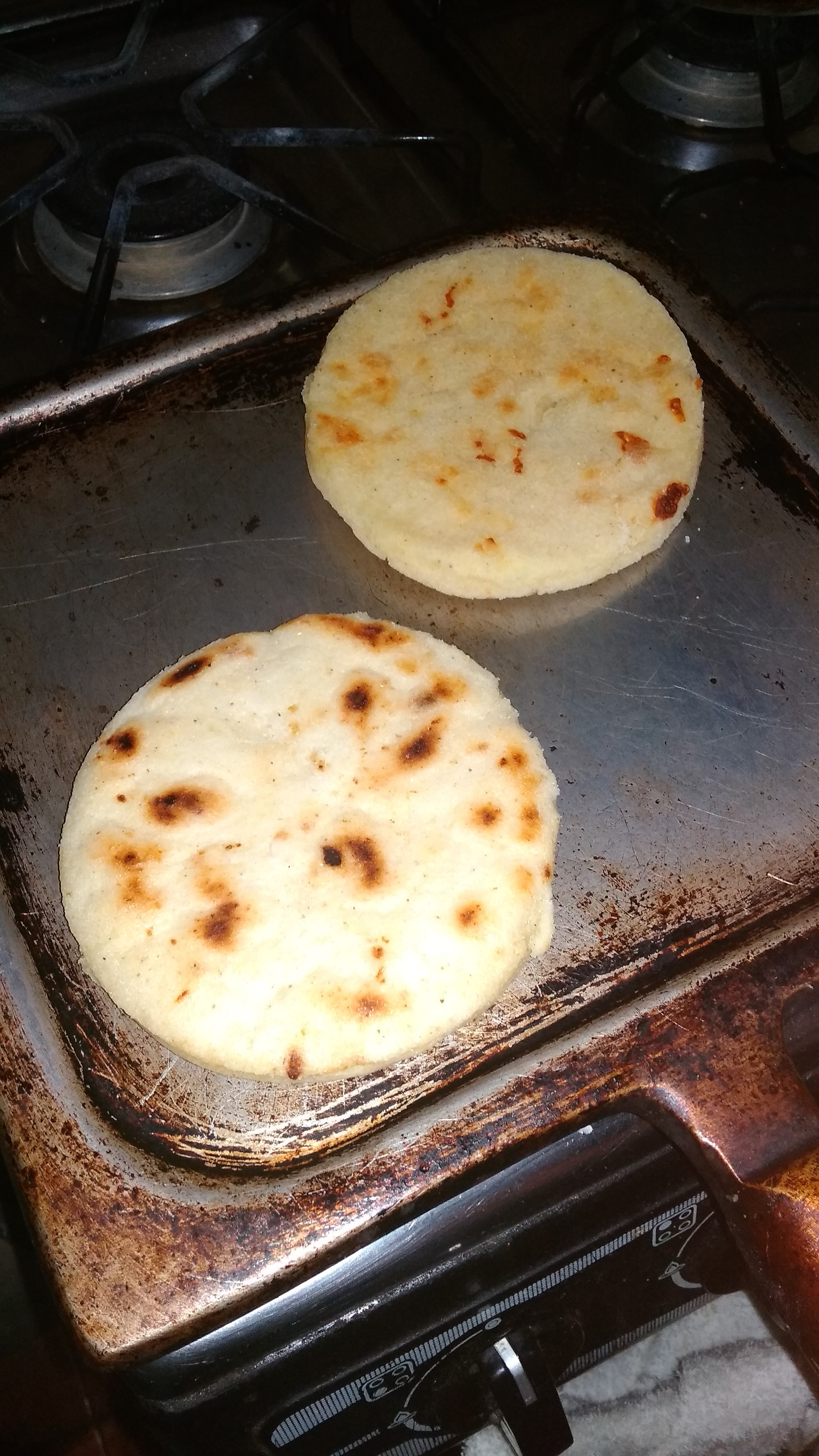Colombian Hominy Cakes
Arepas (corn cakes)
Arepas (corn cakes) are a typical Colombian and Venezuelan snack, and many say it originated in Colombia. There are also many ways to prepare arepas, in that they can vary in ingredients, the cooking method, its shape as well as many other elements. These characteristics usually vary based on region, in the way they've been developed through different cultural customs. Among the many options is the Colombian hominy cake (or white hominy cake), which our family has tweaked to suit our taste.
Colombian hominy cakes, according to the Antioquia Department and other departments within the Colombian Coffee Growing Axis are traditionally made without cheese and are very light. However, our family have changed that, with the main difference in our recipe being that my mother and aunt make them with cheese and double cream, or campesino (Mexian) cheese in the middle - which I personally think is delicious and for us, it's better than than the original.
Just today, following a long day of doing nothing, and after drinking a nice coffee, much needed to help me digest all the salty foods I'd eaten, my aunt and mum made their signature arepas - which they make weekly - the Colombian hominy cakes. Rightly so, they took advantage of the energy that coffee gave me and put me to work grinding the corn. I finished feeling like I'd just done a cardio class - dancing and singing made it much easier and more enjoyable.
Preparation
The story of this recipe isn't particularly interesting, my aunt Cecilia told me that she used to make them but started making them again, and it became a family tradition when my other aunt, Fabiana, started giving them to us and enticing us with them whenever we visited her house. Her method, which my aunt and mother have copied, is the following:

- Cook the corn in a pressure cooker to accelerate the process, and let it simmer for about forty minutes. This is the recommended option because it takes around two hours, a lot longer, to cook in a normal cooker.
- When the corn is cold and without having drained away any excess water, grind the corn. This is the most exhausting part of the process, it took me two hours today since we were using over three pounds of corn.

- My mum and aunt differ when making the dough of the arepa. While my mum only adds melted butter to the dough, my aunt adds milk, butter, salt and sugar, and I have to say they are considerably different. With sugar they're nicer, but don't let my mum know I said that.
- Once you have mixed in all the ingredients and you have an even dough, it's time to assemble the arepas. My aunts and mother differ here, too. After my aunts have made the dough into a ball shape, they squish a hole into the centre to fill with grated cheese, then they finish moulding it with their hands and close the hole over. On the other hand, my mother, who learned from her aunts who used to sell arepas, uses a more practical and simple method. This method consists of rolling out the dough, not too thick (like a pizza), then, with a circular mould she cuts out several pieces, and with two pieces and a slice of cheese she assembles the arepa.

- With the arepas evenly assembled, always keep them frozen in plastic food bags and cook them as soon as you're ready to eat.
- When the time comes to cook them simply put them in a frying pan or a pan made for cooking arepas until they're brown, delicious and ready to eat.


Of course, I can't miss out the method for preparing the original, in which you take directly from the mass of dough and assemble arepas that are no more than 5 millimetres thick. You cook these ones in a pan which cooks them with open fire, and you can them in many ways: with butter and salt on top, with cheese, even with ham, eggs or whatever you want. The advantage of its simplicity is that they taste so good with so many ingredients and combinations.
Finally, a strange fact, I remember that one of my school teacher's told me that arepas should be Colombia's staple dish, since it's one of the only foods which represents the diversity of our country and is known in all its regions, despite the variations in the way it's prepared.
Marcela Torres, Colombian Globetrotters.
Photo gallery
Content available in other languages
- Español: Arepas de maíz peto
- Italiano: Arepas di mais
Want to have your own Erasmus blog?
If you are experiencing living abroad, you're an avid traveller or want to promote the city where you live... create your own blog and share your adventures!
I want to create my Erasmus blog! →








Comments (0 comments)